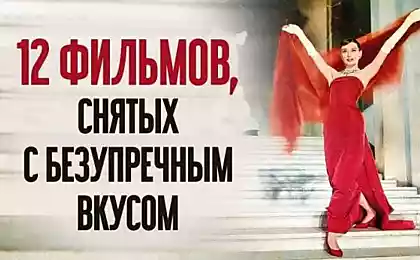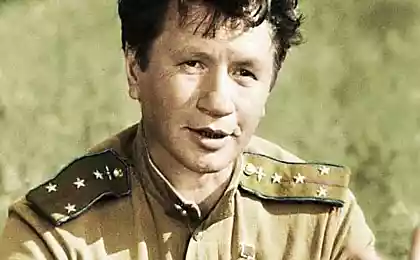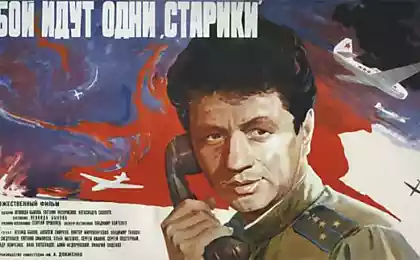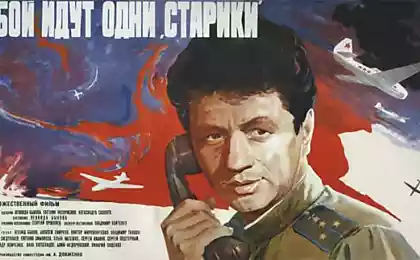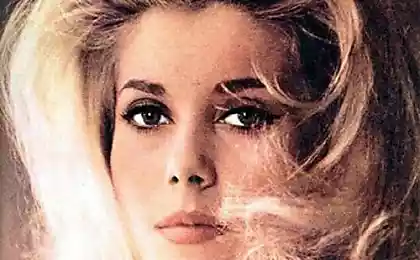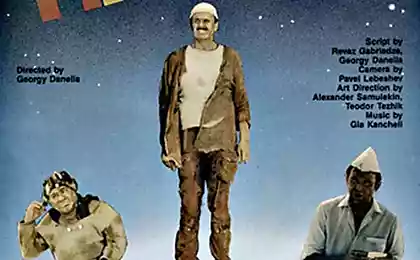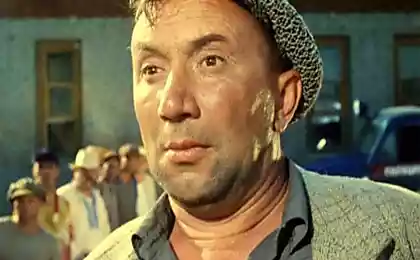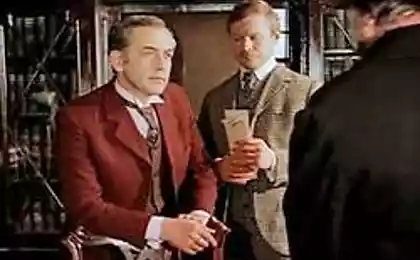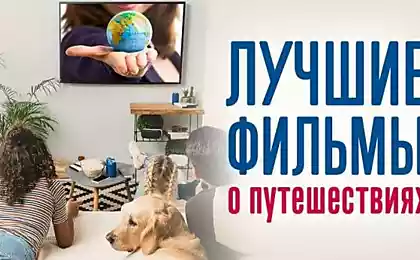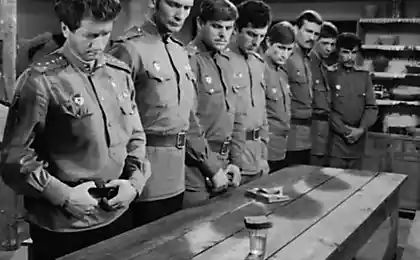1149
"Go to fight some old"
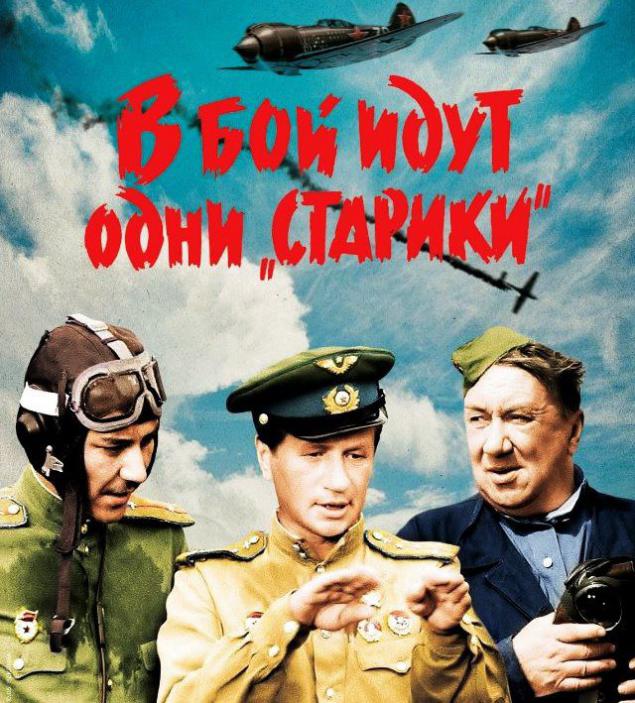
The idea of this film came up with Leonid Bykov ago. During the war, he dreamed of becoming a pilot, but because of his small stature was not taken in flight school. But his love for the people of this heroic profession continued to live there permanently. Once in the early '70s Bulls moved to Leningrad and Kiev, he decided his first film at the studio there the lift just about military pilots.
In collaboration with two writers - Eugene Onopriyenko and Alexander Satskaya - he wrote the script, based on the true events of the Great Patriotic War. In particular, a person squadron commander LIEUTENANT Titarenko (aka Maestro) hiding the Hero of the Soviet Union, the guy with the Arbat Vitaliy Popkov. During the war he served in the legendary 5th Guards Fighter Aviation Regiment under the command of Vasily Stalin and his squadron was nicknamed "singing" because it had its own choir, and two aircraft were donated to the front of the orchestra Utesova and one sported the words "Jolly Fellows". By the way, the regiment Vasily Stalin came to Berlin and brought down the record number of enemy aircraft - 744, had in its ranks 27 Heroes of the Soviet Union (14 of them were directly under the Maestro, and most Popkov after the war in Moscow installed as bust twice Hero) < br />
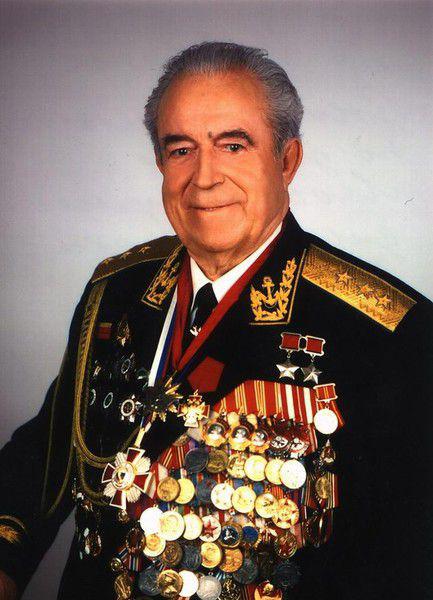
When Bykov wrote the script, he tried not to depart from too real events, although some things still speculation and changed. For example, he invented a new character - Grasshopper. Actually bends low over the airfield before the girls were manufactured by none other than himself, Popkov, for which the commander ordered him to forbid combat sorties a month. But such deviations from the real events in the script was a bit, and the lion's share of what we see in the film - though

This love of the Uzbek Romeo (real name of the pilot was Marnsaev) to Russian Juliet, and their subsequent death (she died in the bombing of the dining room, and laid his head Romeo in one of the battles) ...

... And the habit of mechanics baptize before flying planes ...

... And hit Maestro prisoner to his (to prove their belonging to the Red Army had to punch one of the guards in the face), etc. etc.

Meanwhile, when the script was written and sent "up", there will soon come to an unexpected answer: that the material unheroic. High censors were outraged by the fact that Soviet pilots are depicted in many scenes as singing clowns. In short, put a film Bykov initially banned. But he did not despair. To prove the converse, the Bulls took ... "run in" scenario on the stage. Reading them separate pieces of the script in various cities of the Soviet Union resulted from the audience so excited, that is no doubt of the correctness of created works censors did not arise. And then there's the scenario for the steel to stand up people who do not know firsthand about the war. In particular, 14 November 1972 goals on Dovzhenko sent a letter to the chief of staff of the military unit 55127 Colonel Lezzhov. He wrote that he had read the script - this is an honest story about the war and about the people who mined it win

February 20, 1973 the film was launched during the preparatory period. And here, too, Bykov had to face a number of difficulties. For example, a lot of nerves he should statement on the role of motor-vehicle Makaritch Leningrad actor Alexei Smirnov. He was known to a wide audience primarily as a comedy actor plan, and Bykov was to become the front. Learning of this, officials from the movie sharply opposed: "Do not be! He has the same stupid face! "But when the Bulls announced that refuses to shoot the film, if it is not Smirnova, when told that" the actor with a blunt face "- himself a former soldier who returned from the war a full knight of the Order of Glory, the resistance officials was broken. By the way, middle cinematic technique gave the Bulls the same as actually wore Smirnov - Makarych
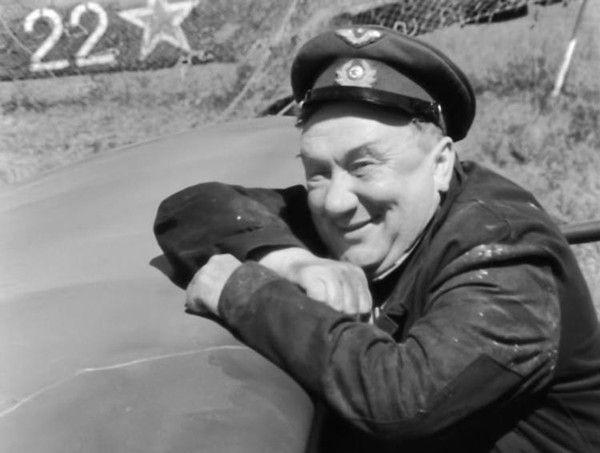
Great help in the work on the film had an air marshal, a legendary pilot Alexander Pokryshkin. When asked for the Bulls to see him, to get him to release for the filming of these aircraft during the war, Marshal initially reacted cautiously to this request. Too much in those years out loop through war movies to marshal the move believed in venture Bykov remove "imperishable." He questioned him leave for a few days the script to get acquainted with the material. But a few days was not required. Overnight Pokryshkin swallowed script and ordered to give filmmakers not one, not two, but five aircraft, four fighter "Yak-18 and the Czechoslovak" 2-326, looks like a "Messerschmitt-109. Machines brought to Kiev airport "The Seagull", where they were repainted and given them a front view

Filming began on May 22 in the pavilion studio Dovzhenko in the scenery "dugout KP" and "dugout battalion commander." Then moved to shooting nature: in late May began to shoot aerial combat "yak" with "Messers". Here remembers about this party of the shooting - the operator Vital Kondratiev: "For the convenience of air filming, I came up with a special device that attaches between the first and second cabins and allows you to take close-up shot during the flight. Bulls my invention has approved and immediately decided to first take to the air to try it out. Pilot subscribed in the sky "barrel" and "dead loop" and Leonid F. includes cameras, pressed the trigger and shouted at the camera: "Serge, cover! Attack! "After a few takes of the aircraft sat down, I changed the film cartridge and the machine again rose into the sky. At the end of the shooting day Bulls literally fell out of the plane and flopped down on the green grass airfield. "Well, how are you?" - I asked, running up to him, and heard in response: "Wink plenku- see!»
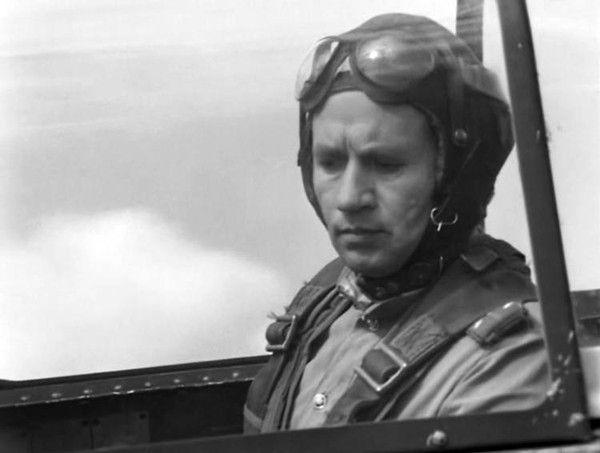
In early June, began filming scenes "at the airport." Since the Bulls did not like it duplicated, he tried to do all the stunts himself. And for the filming pretty well mastered control aircraft. However, in the air, he did not raise them, but itself started the engine and taxied on the airfield. Sometimes without pads can not do. Somehow he could not calculate the rate, and the right wheel fell into the pit of pyrotechnic explosion. Airplane pecked nose flew propeller, rear wheel broke off with the rack. Bulls earned a hefty lump on his forehead, but not upset because of this. The fact that the accident occurred on the same "Jake" with painted on board notes and treble clef. As the plane take to repair Kiev meant losing a lot of time, it was decided to restore the "iron bird" in place on its own. Provident mechanic seized from Kiev a few spare blades, which were immediately installed on the damaged car. But for the rear chassis welding was needed. And then it took over the operator V. Kondratiev. He put his mutilated item in the trunk of his car and drove to the station in the Chernihiv young technicians, where he had friends. However, when he arrived at the station there was no one. The operator had to "catch" them to their homes. When he learned that he was shooting a film about Bykov frontline pilots, masters gladly agreed to help them. Rack welded shut, and the next morning the plane was ready to fly again

Meanwhile, a few days later the new state of emergency happened: from the painting went for the role Darkie Anatoly Mateshko that enticed starring role in another film. Next, listen to the story of the film operator V. Kondratiev: "I remember that morning I met Bykov at the buffet. He was frustrated and crushed in the hands of a piece of paper. In response to my puzzled look he gave me a telegram from the studio: "Urgently send to Kiev Mateshko." What can you do? Let's go on the set, and just then assistant director brought from Kyiv "wet behind the ears" - young people - students Theatre Institute, has just completed his first year. Presented their bulls. He examined the novice actors professional look, searching new Darkie, and stopped at nineteen lad, Sergei Podgorny ... »
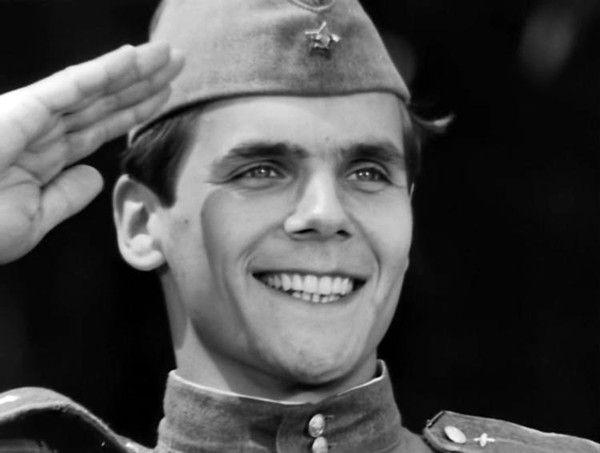
Meanwhile, before the end of the shooting remained for another month, and September 8-10, already filmed the finale: Maestro, Makarych and Grasshopper are the graves of two pilots, one of whom was the bride of their comrade Romeo. As we now know, the film ends with an episode when the Maestro and Makarych sitting in the desert near the monument, and against the background of the final frame will sound the song "For that guy».

In mid-September, the group relocated at the studio Dovzhenko, which was to shoot pavilions. So, September 20-24, filmed an episode in the scenery "dining room": Grasshopper, masterfully filled up "Messer" in front of home squadron, comes into the dining room, where comrades arrange his ceremonial reception

In those days was shot and the other "table" episode, when the pilots' second singing "Darkie commemorate the deceased. The next few days were filmed scenes in the scenery, "Hata girls", "tent", "hut 2 Squadron." Parallel shot dogfights
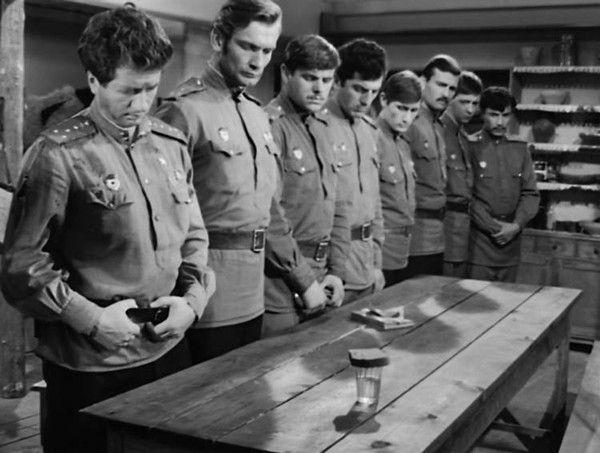
Filming was completed in mid-October, after which the assembly began. It lasted until December 6. Six days later, a film without amendments adopted at the studio, and on 27 December the delivery of the tape in the State Cinema of Ukraine. On it were invited not only high-ranking Ukrainian cinema, but also those whom, in fact, told the film - pilots veterans. One of them was the famous Soviet ace, three times Hero of the Soviet Union shot down in aerial combat 156 59 Nazi planes, Alexander Pokryshkin. Tape it literally shook. When the lights came on in the room, did not escape from the present that Pokryshkin wipes tears
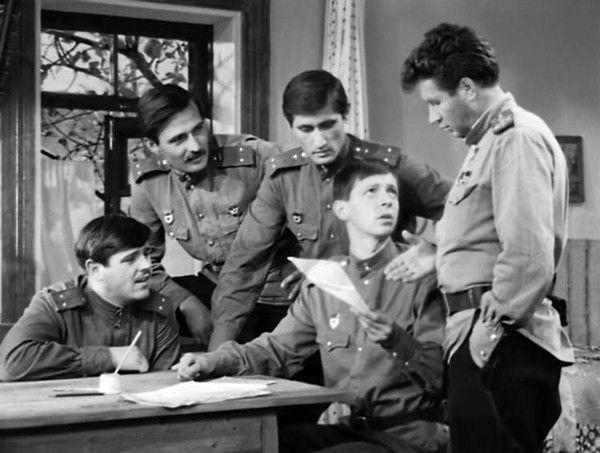
And then the picture looked himself prototype Maestro Vitaliy Popkov. Here is his story about this: "He was in the service in Kiev, called Lena Bykov, went with him to the Ministry of Culture of Ukraine, scroll film. Minister persists: what kind of film, said people do not come back from a mission, die, and live singing songs. And concludes: this was not at the front and could not be. I ask the minister whether he was himself at the front? Logic official surprising was not responsible, but I know. And then I told the minister that flew on one of the two planes, purchased with money donated by jazz Utesova and our regiment. And that Leonid Osipovich with his musicians came to us at the airport, and we played together and sang together. Persuaded. Affected him, perhaps, not so much my arguments as generals epaulettes and two heroic stars ... »
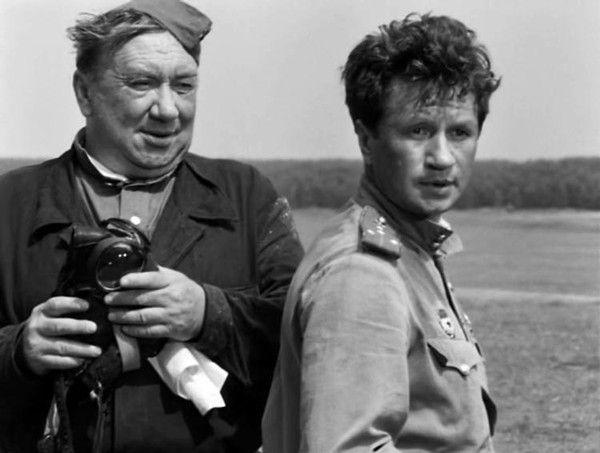
Largely because of the good reviews of former soldiers who managed to see the film before its release on the wide screen, the USSR State Committee for Cinematography decided to encourage filmmakers. February 6, 1974 an order was issued on payment of their remuneration. It was a fair decision, given that the tape was filmed with great savings: from its statement released on 381 thousand rubles was spent 325,000. Among the promotion was 39 people. When awarding highlight the director Leonid Bykov: he paid 200 rubles Prize and awarded the title of "the director of the 1st category" (for example: the actors A. Smirnov, V. Talashko and S. Ivanov, paid 50 rubles)
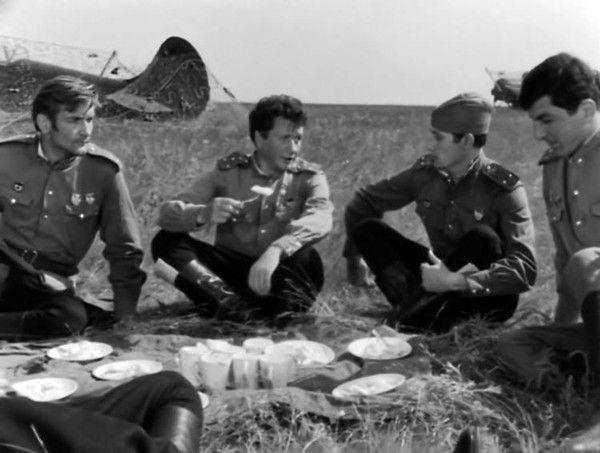
Meanwhile, the leadership of the Dovzhenko Film Studios total remuneration of the chief creators of the film seem insufficient, and it will apply to the USSR State Committee for Cinematography that the author of the script (L. Bykov, E. and A. Onopriyenko Satskaya) raised the fee to 6000 rubles to the maximum - 8 thousands. However, this trick will not work: in the State cinema feel that "teamwork is encouraged sufficiently convincing and increase the fee does not seem appropriate." This is despite the fact that a few months later the movie "go to fight some" old man "will bring many awards at various film festivals and generate revenue in the hundreds of millions of rubles

On the wide screen film was released Aug. 12, 1974. And by the end of the year collected in their sessions 44.3 million viewers (4th place), which was a big surprise: the time movies about World War II a "cash" almost collected
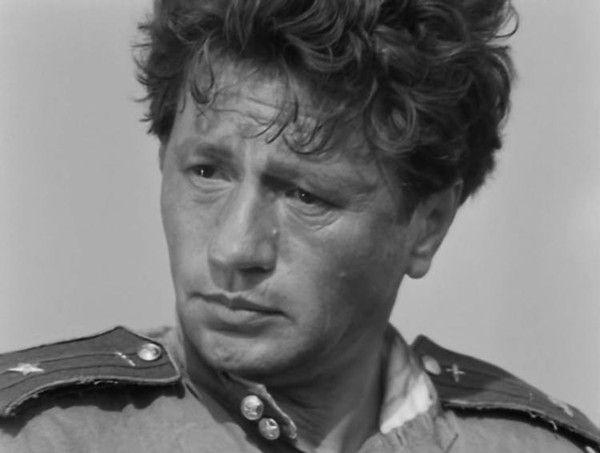
Source: lol54.ru




